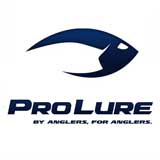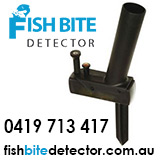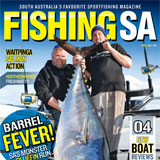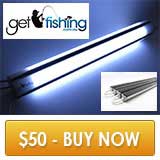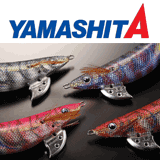Species ID
View AllRainbow Trout
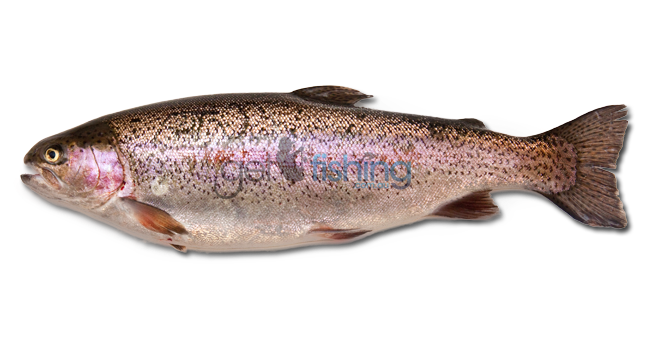
Rainbow trout are one of Australia’s favourite freshwater angling species. They are entertaining aerobatic fighters that make a worthy target to pursue on artificial lures and fly. Rainbows are an amazing and beautiful looking fish and targeting them can become somewhat of an art-form and a lifestyle. They are a native species to the western coastal drainages of North America between Mexico and Alaska and were introduced to Australia for aquaculture and recreational fishing in 1894 and Western Australia in 1927.
Rainbow trout are quite smooth when handled with a soft feeling body and fins. They have a dark olive green to steely blue coloured upper body, lighter sides and a silvery white belly. The head and flanks of the body often displays a pink, red or orange band which becomes particularly prominent around the time of spawning. The body, head and top and tail fins are heavily covered with dark spots.
Other names
Bow, Rainbows, Steelhead Trout
Common size
40-50cm
Related species
Brown trout (Salmo trutta), Atlantic salmon (Salmo salar), Chinook Salmon (Oncorhynchus tshawytscha), Brook trout (Salvelinus fontinalis)
Lifespan
3-4 years
Habitat
Rainbow trout are a freshwater species suited to clear, well oxygenated cold water between 10-22 degrees Celsius. Temperatures outside of 5-30 degrees Celsius are lethal. In other countries they will migrate between fresh and saltwater for for breeding but in Australia they spend their entire life in freshwater. Trout have a preference for shallow stream habits with fast flowing water and stone or gravel bottoms, but also thrive in deep water impoundments.
Reproduction
Most Rainbow trout caught by recreational anglers are under 3kg in weight, however they do grow quite large and can reach sizes up to 9kg and 70cm in Australian waters. They are relatively fast-growing and mature at approximately two to three years of age. They spawn in the cooler months of the year, in streams with gravel or small stone substrate. The female digs a redd (small trough) in the gravel and lays her eggs which are simultaneously fertilised by a nearby male. Larvae remain in the redd after hatching and feed off the yolk sac for a further 3-12 weeks, depending on water temperature. After this the small ‘fry’ leave the redd and begin to feed on their own.
Diet
Rainbow trout are predatory fish that feed on a variety of invertebrates and small fish. Their diet consists of larval and adult insects such as nymphs, midges and beetles, small crustaceans such as yabbies, and small fish including the introduced pest species Redfin perch.
Catch care
Catch and release fishing is a growing trend in Australian freshwater angling and those that practice this style of fishing have got to be given credit for their actions. In saying that, there is no harm in taking a couple of fish when in need of a feed and if you are going to do so look after it properly. Immediately dispatch of the fish humanely, bleed it, and keep chilled until you get home.
If you plan to catch and release remember these few tips:
- Use barb-less hooks for easier removal
- Carefully handle the fish without dropping it and gently place back into the water
- Cut the line if the fish is deeply hooked
- When removing the the hook and/or taking photographs aim get the fish back into the water asap
- Use soft, knot-less landing nets.
Information courtesy Department of Fisheries WA, and DPI Fisheries VIC.
In Australia, Rainbow trout are distributed throughout freshwater lakes and streams in the south east of the country, including NSW, VIC and SA, as well as south-west WA. Rainbow trout are regularly stocked in impoundments and waterways but in case where suitable habitat exists they have formed self-supporting populations.
4 stars. There’s no doubt Rainbow trout are a great tasting fish, but in some instances the flavour can be influenced by natural factors such as diet, spawning, and stress. For instance, after spawning the fish are often worn out and the flesh can lose it’s colour. In this case the fish are better off smoked or returned to the water.
They are a nutritional choice for the table as they are low in fat and high in protein. Their orange-red to pink flesh is quite subtle and fish of a smaller size are well suited to be cooked whole or butterflied. They are also fine to scale and fillet before cooking and if prepared this way the skin is best left on. Like most fish they are best eaten fresh with 24 hours of catching. Around the world they are cooked in countless recipes. In Australia many choose to have their trout baked, grilled, steamed, poached, barbecued, fried and of course the old favourite smoked trout. In your more simple dishes you might find that a touch of salt and/or pepper will do wonders to enhance the flavour of the fish.
Information courtesy of Andrew Badullovich, NSW.
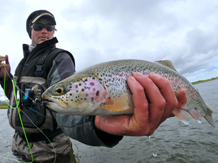
- Are a member of the family Salmonidae (salmon, trout, chars, freshwater whitefishes and graylings)
- Were introduced to Australian waters for recreational fishing and aquaculture in 1894
- In their native habitat they can reach 18kg and 1.2m in length
- Grows up to 70cm and 9kg in Australian waters
- Often a rosy pink to red stripe across the body and gill covers
- Females can produce up to 2000 eggs per kilo of body weight
- Juveniles roughly the size of your finger are known as ‘fingerlings‘
- Mature males develop an upward hooked bottom jaw
- Good eating











